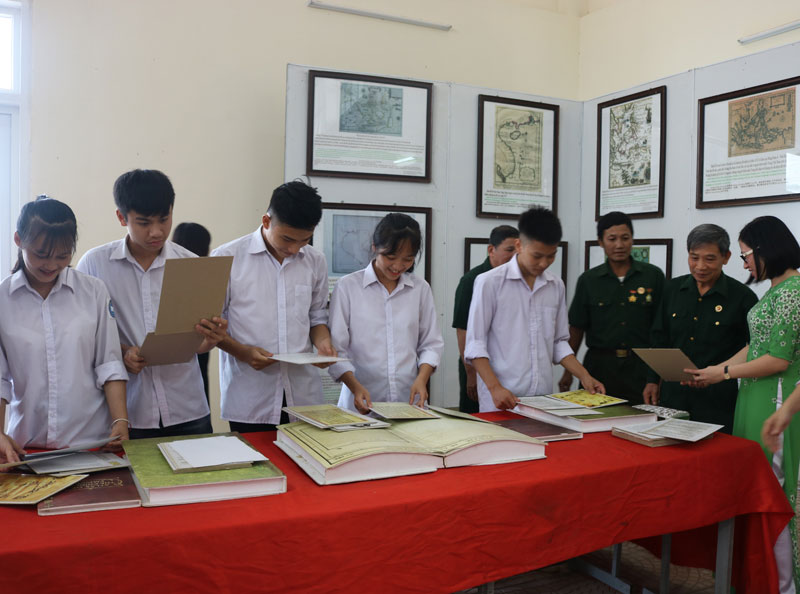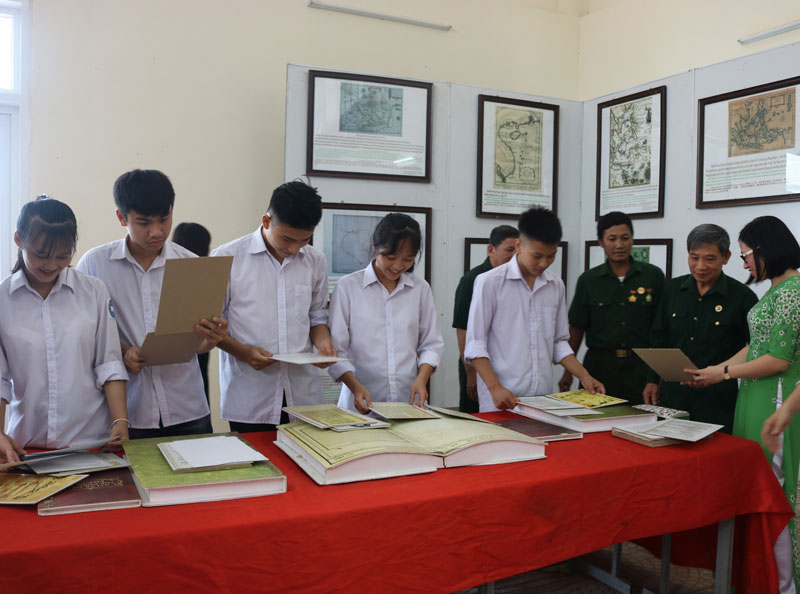
(HBO) – The Hoa Binh Department of Information and Communications, Department of Education and Training, and the People’s Committee of Tan Lac district jointly organized an exhibition showcasing documents on historical and legal evidence affirming Vietnam’s sovereignty over Hoang Sa (Paracel) and Truong Sa (Spratly) Archipelagos at Tan Lac High School on April 8.
The exhibition introduced 171 maps and precious historical
documents on national sovereignty over Hoang Sa and Truong Sa, along with a 3D
digital exhibition.
Alongside, the organising board also held thematic seminars
on national sovereignty over seas and islands with the participation of
soldiers who have directly engaged in the safeguard of the national sovereignty
over seas and islands.

Visitors,
including many local students, at the exhibition.
The event was a chance for officials, Party members, public
servants, members of the Ho Chi Minh Youth Union, students and locals in the
district to get a better understanding of the current situation in the East
Sea, urging them to take specific and practical activities to promote the tradition
of patriotism and solidarity, as well as awareness of and responsibility in national
construction and defence.
The exhibition will open to the public until April 13.
The People’s Committee of Lac Son district held a ceremony on April 28 to receive the provincial relic certificate for the ancient rock carving site at Suoi Co stream, located in My Thanh commune.
A special music show titled "The country is in the fullness of joy” has been held at Hoa Binh Square in Hoa Binh city in celebration of the 50th anniversary of the liberation of the South and national reunification (April 30, 1975–2025).
The People's Committee of Lo Son commune, Tan Lac district, has organised the local annual traditional stream fishing festival on April 19 - 20.
As a land deeply intertwined with human history and Vietnam’s millennia-long journey of nation-building and defence, Hoa Binh is often revered for its epic tales and legends.
Residents of Hoa Binh boast a rich cultural identity, reflected in their unique language, traditional attire, customs, and folk melodies – described as "sweet as honey, clear as a mountain stream.”
Lac Son district’s Vu ban town held the 2025 Truong Kha temple festival on April 12–13 (the 15th–16th days of the third lunar month). Since its revival in 2019, the festival has been organised every three years, preserving valuable intangible heritage while meeting the community’s cultural and spiritual needs.



